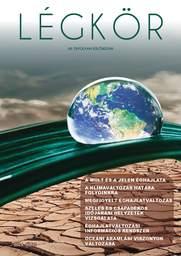LÉGKÖR - Quarterly Newsletter
Vol. 69 - special issue * Pages 1–44 * July 2024
 |
Newsletter of the HungaroMet Nonprofit Zrt. Special Issue |
 download [pdf: 20640 KB]
download [pdf: 20640 KB]
Providing representative meteorological data to understand past and present climate
Izsák Beatrix, Szentes Olivér, Bihari Zita, Bokros Kinga, Lakatos Mónika
DOI:10.56474/legkor.2024.K.1 (pp. 4–11)
Izsák Beatrix, Szentes Olivér, Bihari Zita, Bokros Kinga, Lakatos Mónika
DOI:10.56474/legkor.2024.K.1 (pp. 4–11)
Examination of observed climate change based on 30 years climate normals and in the light of a forthcoming climate atlas
Bihari Zita, Szentes Olivér
DOI:10.56474/legkor.2024.K.2 (pp. 12–17)
Bihari Zita, Szentes Olivér
DOI:10.56474/legkor.2024.K.2 (pp. 12–17)
Development of an information system supporting the complex examination of the effects of climate change
Szépszó Gabriella, Allaga-Zsebeházi Gabriella, Bordi Sára, Megyeri-Korotaj Otília, Schuchné Bán Beatrix, Zempléni Zsuzsanna
DOI:10.56474/legkor.2024.K.4 (pp. 23–29)
Szépszó Gabriella, Allaga-Zsebeházi Gabriella, Bordi Sára, Megyeri-Korotaj Otília, Schuchné Bán Beatrix, Zempléni Zsuzsanna
DOI:10.56474/legkor.2024.K.4 (pp. 23–29)
The possible effects of climate change on the water quality of our large rivers - climate parameterization of the boundary conditions of water quality modeling
Liptay Zoltán, Engloner Attila
DOI:10.56474/legkor.2024.K.5 (pp. 30–36)
Liptay Zoltán, Engloner Attila
DOI:10.56474/legkor.2024.K.5 (pp. 30–36)
Impact of changes in the circulation system of the Atlantic Ocean on the climate
Bordi Sára, Szépszó Gabriella
DOI:10.56474/legkor.2024.K.6 (pp. 37–42)
Bordi Sára, Szépszó Gabriella
DOI:10.56474/legkor.2024.K.6 (pp. 37–42)
LÉGKÖR - Quarterly Newsletter
A folyóirat nyomtatott változata megrendelhető a legkor@met.hu címen.
Kapcsolat: legkor@met.hu
SZERKESZTŐBIZOTTSÁG
SZERZŐI ÚTMUTATÓ
Kapcsolat: legkor@met.hu
SZERKESZTŐBIZOTTSÁG
SZERZŐI ÚTMUTATÓ









